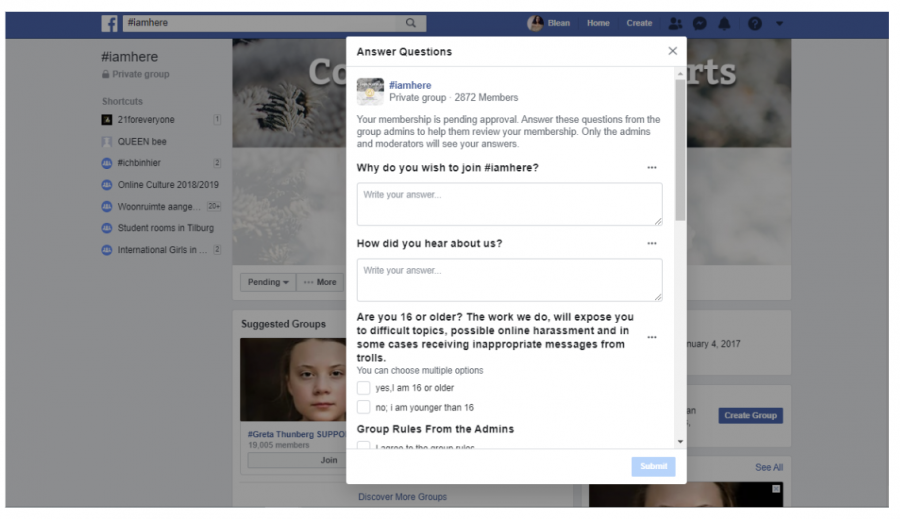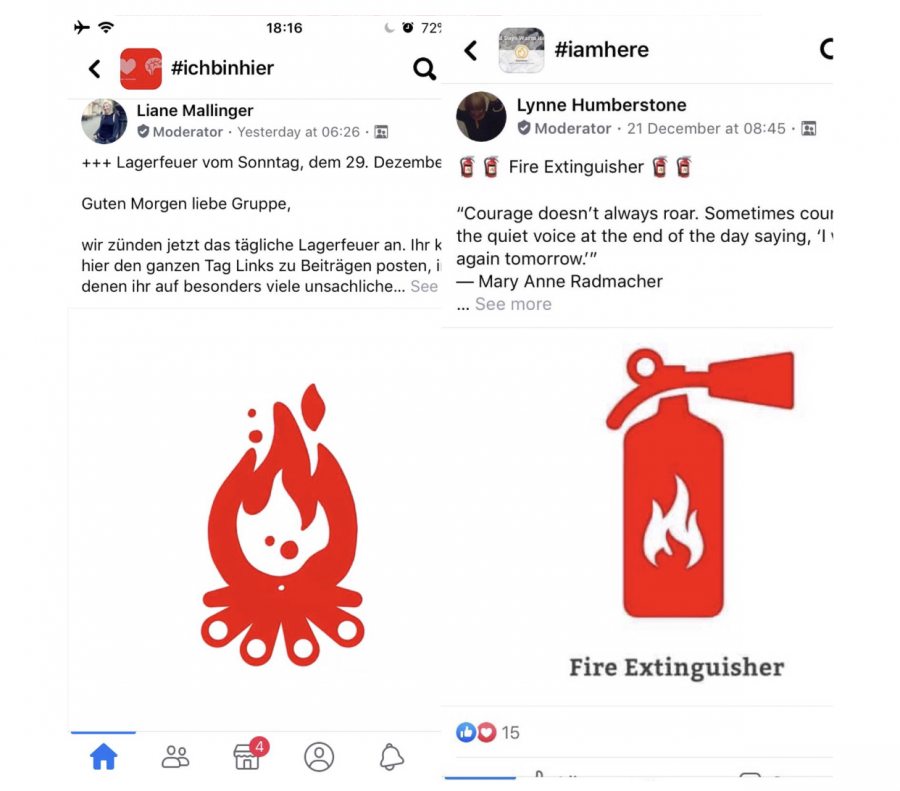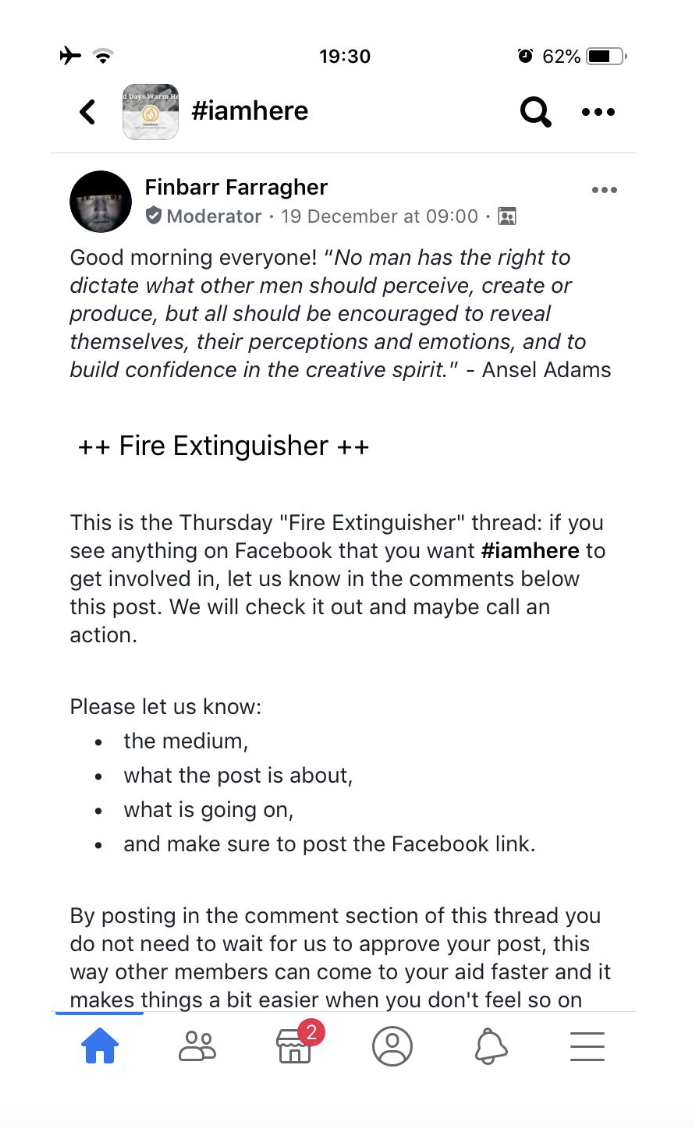
'Fixing' The Digital Sphere By Providing Balance Between Hate & Kind Speech
This article aims to analyze the transformation of the public sphere into a digital sphere which is dominated by digital nazism fueled through the establishment of digital imagined communities as it was once fancied by the founders of ArktosMedia.
| Introduction
The focus is on the journalistic aspect of the digital culture, which is as well altering as the public sphere has transcended into a digital sphere. Journalism in this sense is restructured through the influences of the digital sphere, specifically, the toolkits of social media have allowed for the inclusion of a new participant.
That is citizen witnessing is developing news media, which in addition is also referred to as media witnessing, due to citizens increasing participation in the news media by applying benefits found on social media.
This has caused cultural criticism of news media because news media nowadays uses social media platforms to gain information. However, this practice aids in explaining as well the evolution of digital culture and technologies.
In the end, this essay will lead to the big question of whether ideological polarization is benefitting society inside the newly established digital sphere, by taking these new approaches of digital vigilantism.
| How Does Digital Vigilantism Work With Citizen Witnessing - The case of the #Iamhere movement -
The example of the #Iamhere movement, explains the exact benefits of citizen witnessing in relation to digital vigilantism experienced on social media platforms. The movement was established in Sweden. The main aim and purpose were to provide a counter-balance for the increasing amount of negative/hate comments the founder of the movement has come across on social media platforms like Facebook.
Negative comments, in this sense, refer to the fact that the comments volunteers encountered online entail xenophobic and nationalistic-focused ideals, that in their opinion, fuel and encourage racism and division in society offline.

Figure 1. A person using their smartphone like everyone else.
The intentions of the movement are not to attack or fight the people that create negative comments on social media platforms, but instead to balance out the negative with the positive. This example is a form of digital vigilantism that encourages citizen witnessing on a social media platform.
Usually, citizen witnessing is fundamentally the act of an ordinary citizen being the first person on the scene of a crisis event with a camera, and recording the event so that they are the witness of it (Allan 2016). However, at its core, citizen witnessing is a self-reflexive practice that is to bear witness (or not). That means that citizen witnessing can be applied in this modern-day praxis of digital witnessing.
Instead of witnessing an event offline with a camera, everything is replaced with digitalization. That means that the witnessing is online and instead of a camera, social media-provided toolkits are used. This implies a change in citizen witnessing as it is in comparison described by Stuart Alaan (2016), but it also furthermore implements a new structure that relates to the increase in digital vigilantism.
In order to understand the developments of citizen witnessing, the example of the #I am here movement will be used. As it is showcased in other examples that are not mentioned here specifically, the digital sphere is plagued with digital nazism fueled by digital imagined communities. The digital sphere can be fixed by balancing out the negative with positive activism as the #Iamhere movement is trying to do. This is as follows discussed.
| #Iamhere: Modern-day aka Digital Citizen Witnessing That Increased Digital Vigilantism
The movement #Iamhere is particularly focused on spreading awareness on Facebook. The intention for creating this movement arose due to the belief that there is a lack of input by Facebook to tackle negative/hate comments. The movement took it upon themselves to eradicate this problem. Facebook’s contribution, after the establishment of the movement, was to allow them free ad credits and to support the meet-ups of #Iamhere.
Within the platform, the movement has created more than 20 plus groups that are closed and joining the movement is a pending membership that requires newcomers to fill out a form (Figure 2). This gives a chance for the respective owner of the group to evaluate new members and gives reassurance to filter real volunteers.

Figure 2. Showcases the form newcomers have to fill out before they can join the group.
The 20 groups differ by country and language but overall they are proof of the need to face the rising negative comments on Facebook that impose xenophobic and far-right nationalistic ideals.
This was also found in the research conducted by Kreissel and ISD, that there is a rise in online hate campaigns and right-wing extremists on social media platforms online. This is further touched upon in this link (click the link to find out more).
Mechanisms found in algorithmic activism tend to be the essence of solving the rising problem. Modern-day aka digital citizen witnessing allows for the average citizen to be active, by going online, scanning Facebook for big-pages run by mainstream media organizations for conversations and reading the comment sections to combat hate speech online.
For example in the German version of the movement called #ichbinhier, one of the members is Nina, a director of an NGO. She spends up to three hours a day checking Facebook comments to substitute the bad with the good. In the interview with BBC report, it becomes clear why exactly she and others want to make a change online in an independent manner (Kansara, 2019).
Nina has a mixed-raced child that is of African descent and it is in Nina’s best interest to raise awareness and combat this problem online. She has repeatedly experienced and dealt with racism, together with her Ugandan Husband, in Germany.
The approach she is taking as many others are doing is a rational approach, since the digital sphere is becoming the mainstream platform for young people to communicate, gain information and virtually connect with family and friends.
If her daughter does make use of social media platforms in the future, it is most likely that she will encounter racist comments full of hatred. If this problem is not dealt with in the way the #iamhere movement is currently performing, more issues could appear.
| #Iamhere/#ichbinhier Approach Of Digital Vigilantism
The top three prevailing online movements of the hashtag are in the English, German and Swedish versions (Figure 3). The following part will focus on analyzing certain mechanisms found on the English and German pages, due to a language barrier for the Swedish version. The focus is to prove that there is digital vigilantism and it is the new step to take action in the continuously growing and highly influential digital sphere.

Figure 3. Facebook groups of the Digital Vigilantist's - the German, English & Swedish versions.
The movement operates according to the codes (Figure 4) of a fire extinguisher in the English version of #iamhere and in the German #ichbinhier as a ‘Lagerfeuer’ (campfire). These qualify as forms of encouragement for people to speak up about topics by posting them and tagging ‘#iamhere/#ichbinhier’.

Figure 4. Depicts the codes of the movements.
As mentioned in the aforementioned paragraphs, the goal is not to interact directly with the rising xenophobic haters online. But instead, it is their goal to spread positive and inclusive news topics, that will hopefully have an impact offline too. Their main aim is to override the increasing amount of right-wing platforms, their comments, and support.
Examples of action-taking that strike similarities to algorithmic activism are in the form of posting, tagging and sharing (Figure 5). Anyone who is a member of the group is allowed to post inspiring videos or pictures of a story. The members that do post, usually describe as well what the video or picture is about, with the main intention to uplift and create more views to have more of a positive support for the platform.

Figure 5. Showcases an example of the action-taking by members of the movement.
This unconsciously is algorithmic activism, since it encourages interactions between the same group of people and thus it will create a buzz online. The platform's algorithm such as Facebook will notice the increasing interactions of a post and will in turn allow for more positivity on the social media platforms.
If it will completely override xenophobic or racist comments as Nina hopes one day might be still a farfetched virtually based utopian- idea.
It is nevertheless, refreshing to see a group of people, specifically women, partaking in this. Also, popular news media have picked up on the story and shared articles on this, such as BBC Report (2019), Deutsche Welle and Fox News (2019).
| Conclusion
Looking into this form of activism and approaches applied by the members of the #iamhere movement, the movement is comparable to law enforcement, that is the police. This, however, is now virtual and only performed on a social media platform by random people with no specific training.
Is the growing media attention because digital vigilantism has never been done before in this manner?
The essence of this movement resembles a lot of key factors that have been present in the offline world but are now reappearing online. This means that citizen witnessing, policing, and judges in court are staying offline, however, the online versions of this form of necessities that create social order are online but now random citizens are partaking in controlling and cleaning up the net.
The outcome of this in this sense is that media witnessing is taking over and applying strategies of digital vigilantism that are trying to solve the problem of the increasing amount of digital nazism growing on the internet. If this will suffice in creating the digital- utopian platform we are hoping for, is yet to be revealed.
Overall, the movement, as an example of change in the digital culture that is known for now, proves initially that the public sphere is altering into a digital sphere. It furthermore has been linked to ideological polarization, but the question still remains, whether this is the ‘right’ way of fixing issues that are present in the public sphere, which are reappearing in the digital sphere.
References
Allan, S. (2010).NewsCulture. McGraw-Hill Education.
A, Bergström and M. J. Belfrage, (2018).News in social media: Incidental consumption and the role of opinion leaders.Digital Journalism, 6:5, 583-598.
Carbone, C. (2019, June 10) #Iamhere on Facebook: How thousands of users combat hate speech on the social network. Fox News. Retrieved December 11, 2019.
Kansara, R. (2019, June 10) #Iamhere: The woman fighting hate speech. BBC Report. Retrieved December 11, 2019.
K. Wahl-Jorgensen, (2016). Emotion and journalism. In Witschge,et al.(Eds),The SAGEHandbook of Digital Journalism, SAGE Publications
K. Welbers & M. Opgenhaffen (2019). Presenting news on social media,Digital Journalism, 7:1,45-62.
K. Andén-Papadopoulos and M. Pantti, (2013). Re-imagining crisis reporting: Professional ideology of journalists and citizen eyewitness images.Journalism.14(7).
K. Andén-Papadopoulos, (2013). Media witnessing and the ‘crowd-sourced video revolution’.Visual Communication, 12(3).
Löfgren, E. (2017, February 28). Meet the Swedish internet vigilantes fighting hate online. THE LOCAL (se). Retrieved December 13, 2019.
M. Carlson, (2016). Sources as news producers. InWitschge, et al. (Eds),The SAGE Handbook Of Digital Journalism, SAGE Publication Meraz and Papacharissi, (2016)
Networked framing and gatekeeping. In Witschge, et al. (Eds), The SAGE Handbook of DigitalJournalism, SAGE Publications.ns.
Quan, D. (2020, January 4). How digital activists around the world are trying to change the tone of social media. NATIONAL POST. Retrieved January 6, 2020.
S. Allan, (2016). Citizen witnessing. In Witschge,et al. (Eds),The SAGE Handbook of DigitalJournalism, SAGE Publications.
S. Allan and C. Peters, (2015). Visual truths of citizen reportage: four research problematics,Information, Communication & Society, 18(11), 1348-1361
Trottier, D. (2017). Digital vigilantism as weaponization of visibility.Philosophy & Technology,30(1), 55-72
Turner, G. (2010). Ordinary people and the media: The demotic turn. London: Sage.